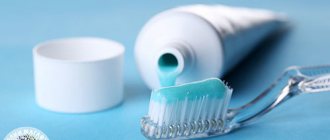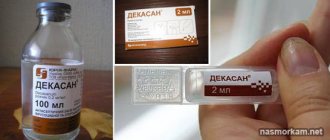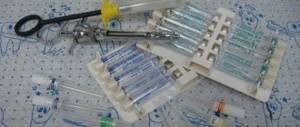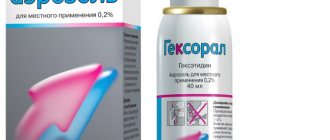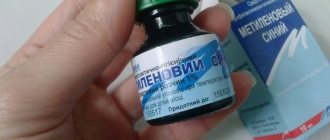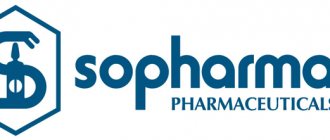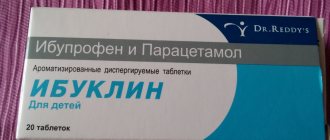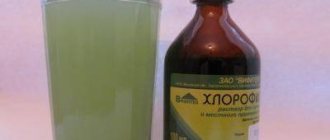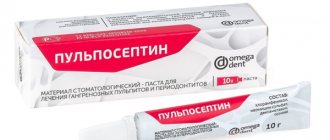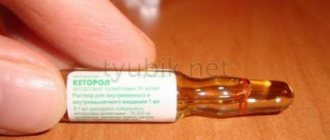Natural Pain Relievers: Benefits
When pain occurs, the first thing that comes to mind for most of us is the desire to take a painkiller. In itself, such a decision is quite logical and natural, but not all people think about the consequences of an uncontrolled addiction to chemical analgesics.
Expert opinion
The main means for relieving pain in modern medicine are SPVP (steroidal anti-inflammatory drugs) and NSAIDs (non-steroidal anti-inflammatory drugs). They are highly effective, but can provoke the development of a number of side effects, including such dangerous conditions as increased blood sugar levels, increased blood pressure, the development of cardiovascular pathologies, and problems with the gastrointestinal tract. Therefore, they should be prescribed exclusively after assessing the patient’s general condition and taken strictly under the supervision of the attending physician.
Vascular surgeon, phlebologist
Osipova Ekaterina Yakovlevna
- Unlike SPVPs and NSAIDs, natural painkillers are characterized by a milder and more delicate effect. In addition, they have other advantages:
- Such drugs can be used for a long period, while synthetic analgesics have a strictly regulated period of administration, which is not recommended to be exceeded.
- Herbal analgesics are characterized by a safe and natural composition. Of course, only if the raw materials for natural painkillers were collected in an environmentally friendly area, far from areas of radiological activity, highways and factories.
- Natural analgesics are much less likely to cause side effects, are not addictive and do not lead to withdrawal symptoms.
- They are usually easily accessible and have a low price, unlike many synthetic medications.
Disadvantages of natural pain relievers
When can you try to do without analgesics?
If the pain is mild or moderate, if you have already experienced it, it is not accompanied by other symptoms, it is not at all necessary to immediately take painkillers. Most often, tension headaches and low back pain are relieved without pills. It is enough to simply eliminate the factors that provoke it: relax, distract yourself from negative thoughts, take a comfortable position, etc. For pain in the lower back, it is quite possible to make a corset at home from a sheet (diaper) and folded newspaper for temporary fixation of the lumbar region . In cases where sudden pain is accompanied by nausea, vomiting, numbness or weakness in the limbs, speech impairment, facial asymmetry, you should urgently call an ambulance. Acute, unremitting pain in the abdominal area is also a reason to urgently see a doctor.
Natural pain relievers: disadvantages
Despite the impressive list of advantages, herbal analgesics also have disadvantages that need to be remembered before starting treatment:
- Natural pain relievers are not a panacea. Neglecting to visit a doctor and treat with more effective and fast-acting medications can, in some cases, lead to a worsening of the patient’s condition. This primarily applies to heart attack and stroke, injuries, appendicitis, pneumonia and other serious conditions.
Expert opinion
When it comes to pain caused by serious acute and chronic diseases, taking herbal pain relievers alone may not be enough. Therefore, it is important to correctly assess your condition, if necessary, take something more effective than chamomile decoction, and seek medical help in time.
Vascular surgeon, phlebologist
Osipova Ekaterina Yakovlevna
- When using natural analgesics, there is always a risk of incorrect dosage selection.
- It would be a mistake to assume that herbal remedies are completely safe and never cause side effects. In fact, they also have contraindications that need to be taken into account before taking them.
- Some medicinal herbs can enhance or, conversely, reduce the effect of medications.
The most effective natural pain relievers
Local anesthetics (local painkillers)
Home Medical Encyclopedia Medicines Analgesic (painkillers) and non-steroidal anti-inflammatory drugs
ANESTHESIN (Anaestesinum)
Synonyms: Benzocaine, Anestalgin, Anestetsin, Anestin, Egoform, Norcaine, Parathesin, Retocaine, Toponalgin.
Pharmachologic effect. Local anesthetic.
Indications for use. For anesthesia of mucous membranes, for spasms and pain in the stomach, increased sensitivity of the esophagus, for pain relief of wound and ulcerative surface of the skin; for urticaria and skin diseases accompanied by itching. Sometimes with primary vomiting, vomiting of pregnant women.
Method of administration and dose. Orally for stomach pain, increased sensitivity of the esophagus, 0.3 g 3-4 times a day; externally in the form of 5-10% ointment and powder for urticaria and skin diseases accompanied by itching, for anesthesia of ulcerative and wound surfaces; in the form of a 5-20% oil solution for anesthesia of mucous membranes.
Contraindications. Individual hypersensitivity.
Release form. Powder; tablets of 0.3 g in a package of 10 pieces; tablets containing anesthesin and dermatol 0.1 g and magnesium oxide 0.3 g, in a package of 50 pieces.
Storage conditions. List B. In a cool, dry place.
AEROSOL "AMPROVISOL" (Aerosolum "Amprovisolum")
Contains anesthesin, menthol, ergocalciferol solution (vitamin D2 in alcohol, glycerin, propolis and ethyl alcohol.
Indications for use. Used for local anesthesia, as an anti-inflammatory and cooling agent for solar and thermal (burns with hot liquids, steam, flame, etc.) burns of I and II degrees.
Method of administration and dose. A stream of aerosol is applied to the affected surface by pressing the head of the balloon for 1-5 seconds, from a distance of 20-30 cm. Depending on the degree of burn and tolerability of the drug, the skin is treated one or more times.
Contraindications. The drug is contraindicated for widespread second-degree burns and skin abrasions. Avoid getting the aerosol into your eyes.
Release form. 50 g in polymer-coated glass aerosol cans or 80 or 170 g in aluminum aerosol cans with spray valve, head and safety cap.
Storage conditions. In a dry place at a temperature not exceeding +35 ° C, away from fire and heating devices; protect from direct sunlight.
BELLASTHESIN (Bellasthesinum)
Contains anesthesin and belladonna extract.
Indications for use. Gastralgia (pain in the stomach), spasms of the stomach and intestines.
Method of administration and dose. 1 tablet 2-3 times a day.
Side effects and contraindications are the same as for anesthesin and belladonna preparations. .
Release form. Tablets containing 0.3 g of anesthesin and 0.015 g of belladonna extract.
Storage conditions. List B. In a dry place, protected from light.
Anestezin is also included in the preparations Almagel-A, heparin ointment, fastin ointment, zinc-naphthalan ointment with anestezin, menovazin, sodium usinate, olazol, bellalgin tablets, pavestezin tablets, anestezol suppositories.
Bupivacaine hydrochloride
Synonyms: Marcaine, Carbostezin, Duracaine, Narcaine, Sensorcaine, Svedocaine.
Pharmachologic effect. It is one of the most active and long-acting local anesthetics.
Indications for use. Used for local anesthesia.
Method of administration and dose. It is used for local infiltration anesthesia (pain relief by soaking the tissue of the surgical field with a solution of local anesthetic) - 0.25% solution, blockade of peripheral nerves - 0.25-0.5%, epidural (introduction of local anesthetic into the epidural space of the spinal canal to anesthetize areas innervated by the spinal nerves) - 0.75% and caudal (introduction of an anesthetic substance into the space of the sacral canal to anesthetize areas innervated by the nerves passing through the sacral canal) anesthesia - 0.25-0.5%, retrobulbar blockade (introduction of local anesthetic in the area of the ciliary corner of the eye) - 0.75%. In obstetric and gynecological practice, only 0.25-0.5% solutions are allowed, but not 0.75%. Caution should be exercised when using a 0.75% solution.
Side effect. When used correctly, the drug provides strong and long-lasting anesthesia. If doses are exceeded, convulsions and depression of cardiac activity (up to cardiac arrest) are possible.
Release form. In ampoules and vials in the above concentrations, as well as with the addition of adrenaline hydrochloride (1:200000).
Storage conditions. List B. In a place protected from light.
DICAINE (Dicainum)
Synonyms: Tetracaine hydrochloride, Ametocaine, Anetain, Decicaine, Felicaine, Foncaine, Intercaine, Medicaine, Pantocaine, Rexocaine.
Pharmachologic effect. Strong local anesthetic. It is significantly more active than novocaine and cocaine, but is more toxic. Well absorbed through mucous membranes.
Indications for use. Dicaine is used only for superficial anesthesia (pain relief).
Method of administration and dose. In ophthalmic practice, it is used in the form of a 0.1% solution when measuring intraocular pressure (one drop 2 times with an interval of 1-2 minutes). Anesthesia usually develops within 1-2 minutes. When removing foreign bodies and surgical interventions, use 2-3 drops of 0.25-0.5-1% or 2% solution. After 1-2 minutes, pronounced anesthesia develops. It must be taken into account that solutions containing more than 2% dicaine can cause damage to the epithelium (outer layer) of the cornea (the transparent layer of the eye) and significant dilation of the vessels of the conjunctiva (outer layer of the eye). Typically, for anesthesia during eye surgery, a 0.5% solution is sufficient. To lengthen and enhance the anesthetic effect, add a 0.1% solution of adrenaline (3-5 drops per 10 ml of dicaine).
For keratitis (inflammation of the cornea / transparent membrane of the eye /) Dicaine is not used.
In ophthalmological practice, when long-term anesthesia is necessary, eye films with dicaine are used. Each film contains 0.00075 g (0.75 mg) of dicaine.
Dicaine is also used for surface anesthesia in otorhinolaryngological practice during certain surgical interventions (puncture of the maxillary sinus, removal of polyps, conchotomy / removal of the lower or middle turbinate /, surgery on the middle ear). Due to the rapid absorption of dicaine by the mucous membranes of the respiratory tract, great caution should be exercised when using it and carefully monitor the patient's condition. Children under 10 years of age are not anesthetized with Dicaine. In older children
use no more than 1-2 ml of a 0.5-1% solution, in adults - up to 3 ml of a 1% solution (sometimes a 0.25-0.5% solution is sufficient) and only if absolutely necessary - a 2% or 3% solution. To a solution of dicaine (in the absence of contraindications to the use of vasoconstrictors), add 1 drop of a 0.1% solution of adrenaline hydrochloride per 1-2 ml of dicaine. The highest doses of dicaine for adults for anesthesia of the upper respiratory tract are 0.09 g once (3 ml of 3% solution).
Side effect. The drug is very toxic; caution is required when using it.
Contraindications. Age up to 10 years, general serious condition of patients. When working with Dicaine, tools and syringes should not contain any alkali residues. Dicaine precipitates in the presence of alkali.
Release form. Ophthalmic powder and films with dicaine, 30 pieces in dispensing cases.
Storage conditions. List A. In a well-closed container.
COCAINE HYDROCHLORIDE (Cocainihydrochloridum)
Synonyms: Hydrochloric cocaine.
Pharmachologic effect. Local anesthetic.
Indications for use. For superficial local anesthesia of the mucous membranes of the mouth, nose, and larynx; for anesthesia of the pulp (soft tissue) of the tooth, cornea (the transparent membrane of the eye) and conjunctiva (outer membrane) of the eye.
Method of administration and dose. For superficial local anesthesia of the mucous membrane and cornea of the eye, 1-3% solutions are used, for the mucous membranes of the oral cavity, nose, and larynx - 2-5% solutions.
Side effect. Possible increase in intraocular pressure, acute attack of glaucoma (sharp increase in intraocular pressure). Caution is required during bronchoscopy (examination of the bronchi using optical instruments).
Release form. Powder.
Storage conditions. List A (according to the rules established for morphine and other narcotic drugs). In a place protected from light in well-sealed orange glass jars.
LIDOCAINE (Udocain)
Synonyms: Xylocaine, Xicaine, Lidestine, Acetoxyline, Alocaine, Anestacon, Anestecaine, Astracaine, Docaine, Dulsicaine, Fastocaine, Leostesin, Lidocard, Lidocaton, Lignocaine, Maricaine, Nulicaine, Octocaine, Remicaine, Xylocard, Xylocitin, Xyloton, Esrakaine, Solcaine, Stericain, Xilesin, Xylotox, etc.
Pharmachologic effect. Active local anesthetic; has a pronounced antiarrhythmic effect.
Indications for use. For infiltration (pain relief by soaking the tissue of the surgical field with a solution of local anesthetic) and conduction (pain relief by exposure of the anesthetic substance to the area of the nerve trunk innervating the surgical field or painful area) anesthesia.
To prevent and eliminate arrhythmia (heart rhythm disturbances).
Method of administration and dose. When using lidocaine aerosol, the dose of the drug can vary widely depending on the size and nature of the surface being treated. In adults, to achieve anesthesia, as a rule, a single dose is 1-3 presses on the bottle valve. In gynecological practice it is sometimes necessary
10-20 or more presses on the valve. A maximum of 40 clicks is allowed. Children over 2 years of age in dental practice, otorhinolaryngology (treatment of diseases of the ear, nose and throat) and dermatology (treatment of skin diseases) are prescribed 1-2 presses on the bottle valve once. After application (application) of lidocaine in aerosol form to the mucous membrane of the oral cavity, larynx, pharynx or bronchi, local anesthesia is provided for 15-20 minutes.
For infiltration anesthesia, 0.125%, 0.25% and 0.5% solutions are used; for anesthesia of peripheral nerves - 1% and 2% solutions; for epidural anesthesia (introduction of a local anesthetic into the epidural space of the spinal canal to anesthetize areas innervated by the spinal nerves) - 1%-2% solutions; for spinal anesthesia (introduction of a local anesthetic into the subarachnoid space of the spinal cord to anesthetize areas innervated by the spinal nerves) - 2% solutions.
The amount of solution and the total dose of lidocaine depend on the type of anesthesia and the nature of the surgical intervention. As the concentration increases, the total dose of lidocaine is reduced.
When using a 0.125% solution, the maximum amount of solution is 1600 ml and the total dose of lidocaine is 2000 mg (2 g); when using a 0.25% solution - 800 ml and 2000 mg (2 g), respectively; 0.5% solution - total amount 80 ml, and total dose 400 mg; 1% and 2% solutions - the total amount is 40 and 20 ml, respectively, and the total dose is 400 mg (0.4 g).
To lubricate the mucous membranes (during tracheal intubation / insertion of a special tube into the trachea /, bronchoesophagoscopy / examination of the bronchi or esophagus /, removal of polyps, punctures of the maxillary sinus, etc.) use 1%-2% solutions, less often -5% solution in a volume of not over 20 ml.
Lidocaine solutions are compatible with adrenaline; add extempore (before use) a 1% solution of adrenaline hydrochloride, 1 drop per 10 ml of lidocaine solution, but not more than 5 drops for the entire amount of solution.
Side effect. Headache, dizziness, sleep disturbance, anxiety. With excessively rapid intravenous administration and in patients with hypersensitivity, convulsions, tremor (trembling of the limbs), paresthesia (a feeling of numbness in the limbs), disorientation, euphoria (unreasonable high spirits), tinnitus, and slow speech are possible. When using high doses of lidocaine, bradycardia (rare pulse), slowing of conduction (impaired conduction of excitation through the conduction system of the heart), and arterial hypotension (lowering blood pressure) are possible. Allergic reactions.
Contraindications. Severe bradycardia, severe arterial hypotension (low blood pressure), cardiogenic shock, severe forms of chronic heart failure, hypersensitivity to the drug. Prescribe with caution in cases of severe impairment of liver and kidney function.
Release form. Solution for injection 0.5%, 1%, 2%, 5% and 10% (1 ml - 0.005 g, 0.01 g, 0.02 g, 0.05 g and 0.1 g) in ampoules and vials ; dosed aerosol for external use (1 dose -0.01 g); dosed aerosol for topical use (1 dose - 4.8 mg). In ampoules of 2 ml of 2% solution.
Storage conditions. List B. In a place protected from light.
Lidocaine is also included in the preparations Ambene, Aurobin, ear drops with prednisolone, Otipax, Proctoglivenol.
NOVOCAIN (Novocainum)
Synonyms: Procaine hydrochloride, Etocaine, Allocaine, Ambocaine, Aminocaine, Anestocaine, Atoxicaine, Cerocaine, Hemocaine, Cytocaine, Etonaucaine, Neocaine, Pancaine, Paracaine, Planocaine, Syntocaine, Genocaine, Gerocaine, Isocaine, Yenakaine, Marecaine, Minocaine, Naukaine, Poloka in , Procaine, Protocaine, Sevicaine, Sincaine, Topocaine, etc.
Pharmachologic effect. Local anesthetic.
Indications for use. Infiltration (pain relief by soaking the tissue of the surgical field with a solution of local anesthetic), conduction (pain relief by exposure of the anesthetic substance to the area of the nerve trunk innervating the surgical field or painful area), epidural (introduction of a local anesthetic into the epidural space of the spinal canal to anesthetize the areas innervated by the spinal cords). nerves) and spinal (introduction of a local anesthetic into the subarachnoid space of the spinal cord in order to anesthetize the areas innervated by the spinal nerves) anesthesia, vagosympathetic blockade (introduction of a local anesthetic solution to the anterolateral surface of the cervical vertebrae) and paranephric (introduction of a local anesthetic into the perirenal tissue in order to anesthetize the internal organs /intestines, kidney, etc./) blockade; to potentiate (strengthen) the action of basic narcotic drugs for general anesthesia; for relieving (relieving) pain from peptic ulcers of the stomach, duodenum, anal fissures, hemorrhoids (bulging and inflammation of the veins of the rectum), etc.
Method of administration and dose. For infiltration anesthesia, the highest doses at the beginning of the operation are no more than 500 ml of 0.25% solution or 150 ml of 0.5% solution, then for every hour up to 1000 ml of 0.25% solution or 400 ml of 0.5% solution for every hour . For conduction anesthesia, 1-2% solutions are used, for epidural (introduction of a local anesthetic into the epidural space of the spinal canal to anesthetize areas innervated by the spinal nerves) - 20-25 ml of a 2% solution, for spinal anesthesia - 2-3 ml of a 5% solution, for perinephric blockade - 50-80 ml of 0.5% solution, for vagosympathetic blockade - 30-100 ml of 0.25% solution, as a local anesthetic and antispasmodic (relieving spasms) agent, the drug is used in suppositories of 0.1 g.
Side effect. Dizziness, weakness, hypotension (low blood pressure), allergies.
Contraindications. Individual intolerance.
Release form. Powder; 0.25% and 0.5% solutions in ampoules of 1; 2; 5; 10 and 20 ml and 1% and 2% solutions, 1; 2; 5 and 10 ml; 0.25% and 0.5% sterile solutions of novocaine in bottles of 200 and 400 ml; 5% and 10% ointment; suppositories containing 0.1 g of novocaine.
Storage conditions. List B. Powder - in a well-closed dark container, ampoules and candles - in a cool place, protected from light.
Novocaine is also included in the combination drugs menovazin, novocindol, synthomycin (1%) liniment with novocaine, solutan and efatin.
NUPERCAINAL
Pharmachologic effect. Nuperkainal causes rapid and lasting local anesthesia.
Indications for use. Hemorrhoids (bulging and inflammation of the veins of the rectum), anal fissures, insect bites, senile itching, itching of the female external
genitals, premature ejaculation (sperm discharge).
Method of administration and dose. The drug is applied to the painful area of skin and lightly rubbed.
Release form. Ointment 1% in packages of 20 and 30 g.
Storage conditions. In a cool place.
Pyromecainum
Synonyms: Bumecaine hydrochloride.
Pharmachologic effect. Pyromecaine has anesthetic properties. It causes a rapid onset, deep and long-lasting anesthesia.
In addition to anesthetic properties, pyromecaine has antiarrhythmic activity in cases of cardiac arrhythmias of various origins (origin). In terms of antiarrhythmic effect, pyromecaine is close to lidocaine.
Pyromecaine has a sedative (calming), analgesic and anti-inflammatory effect.
Indications for use. Pyromecaine is prescribed as an anesthetic for surface anesthesia during therapeutic and diagnostic procedures in dentistry, ophthalmology, otorhinolaryngology, surgery, bronchology, gastroenterology, and urology.
In dentistry, pyromecaine is prescribed for acute and chronic inflammatory diseases of the oral mucosa and periodontal tissue (tooth tissue): aphthous stomatitis, multiform exudative erythema, etc.
Pyromecaine is also used as an antiarrhythmic agent.
Method of administration and dose. Pyromecaine is used topically in the form of 0.5%, 1% and 2% solutions and 5% ointment or intravenously in the form of a 1% solution in a 5% glucose solution.
For surface anesthesia in ophthalmology, 0.5% solutions of 1-2 drops are used, in otorhinolaryngology - 1%-2% solutions of 1-5 ml (in some cases with the addition of a 0.1% solution of adrenaline hydrochloride, 1 drop for every 2 .0-3.0 ml of pyromecaine solution); for endoscopic diagnostic studies (methods for examining body cavities and canals using optical instruments equipped with a lighting device) and therapeutic procedures - 2% solution 2-5 ml; with bronchography (x-ray examination of the bronchi) 10-15 ml; with separate bronchial intubation (insertion of a tube into the lumen of the bronchi) from 14 to 35 ml (average 20 ml). In dentistry, pyromecaine is used in the form of 1% and 2% solutions (1-5 ml each) and 5% pyromecaine ointment - 0.1-1 g each (depending on the volume of treatment). Pyromecaine ointment is applied with a spatula, gauze or cotton swab to the site of anesthesia of the oral mucosa. When curettage (cleaning purulent pockets) of pathological periodontal pockets, ointment is injected into them with a syringe with a blunt cannula. After 2-5 minutes, without removing the ointment, you can begin manipulation. When treating inflammatory diseases of the oral cavity, the ointment is used 1-3 times a day. The duration of treatment depends on the form of the disease and ranges from 3 to 10 days.
Side effect. When using pyromecaine, paleness of the skin and mucous membranes, general weakness, nausea, vomiting, headache, dizziness, fainting, and a drop in blood pressure are possible. If hypotension (low blood pressure) develops, the use of ephedrine or other vasoconstrictors is recommended.
When pyromecaine is applied topically in large doses, pallor, nausea, headache, and dizziness may occur.
Contraindications. Intravenous administration of pyromecaine is contraindicated in cases of impaired liver and kidney function.
Release form. Pyromecaine is available in the form of 0.5%, 1% and 2% solutions in 10 ml ampoules; 1% solution of 5% glucose solution (for intravenous injection) in ampoules of 10 ml; 5% pyromecaine ointment in metal tubes of 30 g.
Storage conditions. List B. In a place protected from light.
TRIMECAIN (Trimecainum)
Synonyms: Mesocaine, Trimecaine hydrochloride, Mesdicaine, Mezidicaine.
Pharmachologic effect. Local anesthetic; acts stronger and longer than novocaine.
Indications for use. Conduction (pain relief by applying an anesthetic to the area of the nerve trunk innervating the surgical field or painful area) or infiltration (pain relief by soaking the tissue
surgical field with a local anesthetic solution) anesthesia.
Method of administration and dose. For infiltration anesthesia, up to 800 ml of a 0.25% solution is administered; up to 400 ml of a 0.5% solution or up to 100 ml of a 1% solution; for conduction anesthesia - up to 100 ml of 1% solution or up to 20 ml of 2% solution.
Side effect. Facial paleness, headache, nausea.
Contraindications. Increased individual sensitivity to the drug. Severe liver and kidney diseases.
Release form. Powder.
Storage conditions. List B. In well-closed glass jars.
Trimecaine is also included in the preparations dioxykol, Levosin ointment, and tsimizol.
Medicines of various groups
BOROMENTHOL (Boromentholum)
Pharmachologic effect. Antiseptic (disinfectant) and analgesic.
Indications for use. Used as an analgesic and antiseptic for lubricating the skin for itching, neuralgia (pain spreading along the nerve), as well as for lubricating the nasal mucosa for rhinitis (inflammation of the nasal mucosa).
Method of administration and dose. Apply a thin layer.
No side effects or contraindications have been identified.
Release form. In metal tubes, 5 g of ointment contains the following composition: menthol - 0.5 parts, boric acid - 5 parts, petroleum jelly - 94.5 parts.
Storage conditions. In a cool place.
DIMEXIDUM
Synonyms: Dimethyl sulfoxide, Demasorb, Dromizol, Giadur, DMSO, Brosorb, Damul, Deltan, Demavet. Dermasorb, Dolikur, Dolokur, Durasorb, Mastan, Somipront, Sinteksan.
Pharmachologic effect. It has a pronounced local anesthetic effect, as well as anti-inflammatory and antimicrobial, changes the sensitivity of microflora that are resistant to antibiotics.
Indications for use. For bruises, sprains, inflammatory swelling, burns, arthritis (inflammation of the joint), radiculitis, etc.; in skin plastic surgery (for preservation of skin homografts /intended for transplantation of tissue taken from another person/), for erysipelas, eczema, trophic ulcers (slow-healing skin defects), pustular skin diseases, etc.
Method of administration and dose. Externally, aqueous solutions (30-50-90%) in the form of compresses and tampons for skin diseases; in skin-plastic surgery, dressings with a 20-30% solution throughout the entire postoperative period until stable engraftment of the graft (transplanted tissue); for storing grafts (taken for tissue transplantation) - 5% solution.
Side effect. A slight burning sensation, small skin rashes, and itching are possible.
Contraindications. Pregnancy, severe damage to parenchymal organs (internal organs /liver, kidneys, spleen, etc./), angina pectoris, comatose (unconscious) states, myocardial infarction, severe atherosclerosis, stroke.
Release form. In bottles of 100 ml.
Storage conditions. In a well-closed container.
M.J. MAGIC BALSAM (M. J. Magicbalsam)
Pharmachologic effect. Combined preparation for external use. It has a local irritant, warming and analgesic effect.
Indications for use. Headache, sinusitis (inflammation of the paranasal sinuses), neuralgia (pain spreading along the nerve), myositis (muscle inflammation), arthralgia (joint pain), lumbago (paroxysmal intense pain in the lumbar region), catarrhal (inflammatory) conditions.
Method of administration and dose. Apply topically. Apply 1-2 g of ointment to the appropriate area of skin.
Side effect. Hives, nausea.
Contraindications. Hypersensitivity to the drug. Do not use in the nasal area in young children (possible collapse / sharp drop in blood pressure /).
Release form. Ointment containing capsicum oil 1.8%, methyl salicylate 2%, menthol 2%, terpene oil 6%, camphor oil 0.5%, fir oil 0.85%, eucalyptus oil 1%, in bottles of 20 and 35 g .
Storage conditions. In a cool place.
MENOVAZIN (Menovasinum)
Pharmachologic effect. Local anesthetic (local anesthetic) agent.
Indications for use. Prescribed externally as a local anesthetic for neuralgia (pain spreading along the nerve), myalgia (muscle pain), arthralgia (joint pain), and as an antipruritic for itchy dermatoses (skin diseases).
Method of administration and dose. Painful areas of the skin are rubbed with menovazine 2-3 times a day.
Side effect. With prolonged use, dizziness, general weakness, and decreased blood pressure are possible.
Contraindications. The drug is contraindicated in case of hypersensitivity to novocaine.
Release form. In glass bottles of 40 ml. Contains 2.5 g of menthol, 1 g of novocaine, 1 g of anesthesin, ethyl alcohol 70% up to 100 ml.
Storage conditions. List B. In a cool place.
METHYLSALICYLATE (Methyliisalicylas)
Pharmachologic effect. Has anti-inflammatory and analgesic activity.
Indications for use. Used externally as an analgesic and anti-inflammatory agent
perse (pure form) and mixed with chloroform, turpentine oil, fatty oils for rubbing in joint and muscle rheumatism, arthritis (inflammation of the joint), exudative pleurisy (inflammation of the membranes of the lung, accompanied by the accumulation between them of protein-rich fluid emerging from small vessels ).
Method of administration and dose. Rub into areas of inflammation.
Side effect. Hyperemia (redness), itching, skin rash, urticaria, angioedema (allergic edema).
Contraindications. Hypersensitivity to the drug. Do not apply to damaged or irritated skin.
Release form. Liquid in bottles of 100 ml.
Storage conditions. In a well-closed container, protected from light.
BEN-GAY
Pharmachologic effect. Combined preparation for local use. It has an analgesic (pain-relieving) and warming effect.
Indications for use. Myalgia (muscle pain) due to joint diseases, injuries, lumbago (paroxysmal intense pain in the lumbar region). Warm-up massage when playing sports.
Method of administration and dose. The required amount of ointment is applied to the painful area and rubbed in gently. The procedure is repeated 3-4 times a day. It is not recommended to use ben-gay in conjunction with thermal procedures.
Side effect. Hyperemia (redness), itching, skin rash, urticaria, angioedema (allergic edema).
Contraindications. Hypersensitivity to the drug. Do not apply to damaged or irritated skin.
Release form. Ben-gay anesthetic rubbing (1 ml -0.1 g menthol and 0.15 g methyl salicylate). Ben-gay rubbing for arthritis (1 ml - 0.08 g menthol and 0.3 g methyl salicylate). Ben-gay rubbing for sports and exercises (1 ml - 0.03 g menthol). Cream in tubes. Ointment in tubes. Gel in tubes.
Storage conditions. In a cool place.
CAMPHOCIN (Camphocinum)
Indications for use. Used for rheumatism, arthritis (joint inflammation).
Method of administration and dose. Rub liniment into the painful area.
Side effects and contraindications are the same as for methyl salicylate.
Release form. In orange glass bottles of 80 ml, liniment has the following composition: methyl salicylate - 10 g, camphor - 15 g, salicylic acid - 3 g, castor oil - 5 g, purified turpentine oil - 10 g, capsicum tincture - up to 100 g.
Storage conditions. In a place protected from light.
CAPSIN (Capsinum)
Indications for use. For radiculitis, neuritis (nerve inflammation), myositis (muscle inflammation), arthritis (joint inflammation), etc.
Method of administration and dose. Rub into areas of inflammation.
Side effects and contraindications are the same as for methyl salicypate.
Release form. Liniment containing 1 part methyl salicylate, bleached oil and tincture of capsicum 2 parts each, in bottles of 50 or 100 ml.
Storage conditions. In a cool place.
METHYLSALICYLATE COMPOSITE Linimentum (Linimentum methyl" salicylatiscompositum)
Indications for use. As an analgesic and anti-inflammatory agent for rheumatism, arthritis (joint inflammation), etc.
Method of administration and dose. Rub into areas of inflammation.
Side effects and contraindications are the same as for methyl salicylate.
Release form. Liniment containing methyl salicylate and chloroform 33.3 g each, bleached (or intoxicating) oil 33.4 g (per 100 g) in bottles of 50 g.
Storage conditions. In a cool place.
Linimentum "Naphthalginum"
Indications for use. As an analgesic and anti-inflammatory agent for rheumatism, arthritis (joint inflammation), etc.
Method of administration and dose. Rub into areas of inflammation.
Side effects and contraindications are the same as for methyl salicylate.
Release form. Liniment containing methyl salicylate, analgin and naftalan oil 2.5 parts each, a mixture of fatty alcohols of sperm whale oil 3 parts, emulsifier 13 parts, water up to 100 parts, in bottles of 100 g.
Storage conditions. In a cool place.
Linimentum /Balsamum/ “Sanitas”
Indications for use. As an analgesic and anti-inflammatory agent for rheumatism, arthritis (joint inflammation), etc.
Method of administration and dose. Rub into areas of inflammation.
Side effects and contraindications are the same as for methyl salicylate.
Release form. Liniment composition: methyl salicylate - 24 g, eucalyptus oil - 1.2 g, purified turpentine oil - 3.2 g, camphor - 5 g, lard and petroleum jelly - 33.3 g each.
Storage conditions. In a cool place.
OINTMENT “BOUM-BENGE” (Ungventum “Boum-Benge”)
Indications for use. Prescribed to adults and children as an analgesic and anti-inflammatory agent for inflammatory diseases of the upper respiratory tract with tracheitis (inflammation of the trachea) as a skin irritant and a distraction, as well as for rheumatism and arthritis (inflammation of the joint).
Method of administration and dose. Rub into areas of inflammation. Children under 5 years old use it instead of mustard plasters.
Side effects and contraindications are the same as for methyl salicylate.
Release form. Ointment composition: menthol - 3.9 g (or peppermint oil - 7.8 g), methyl salicylate - 20.2 g, medical petrolatum - 68.9 g, medical paraffin - 7 g (per 100 g), in aluminum tubes (25-50 g each) or in glass jars (25-60 g each).
Storage conditions. In a cool place.
RENERVOLE (Renervol)
Indications for use. It is used for rubbing in rheumatic pain, neuralgia (pain spreading along the nerve), lumbago (paroxysmal intense pain in the lumbar region), etc.
Method of administration and dose. Rub into areas of inflammation.
Side effects and contraindications are the same as for methyl salicylate.
Release form. Ointment containing 100 g of methyl salicylate 0.5 g, camphor 3.5 g, ethylene chloride 75 g, thyme oil 0.5 g, isobornyl acetate 1 g, in tubes of 90 g.
Storage conditions. In a cool place.
SALIMENTUM
Indications for use. As an analgesic and anti-inflammatory agent for rubbing for joint and muscle rheumatism, arthritis (inflammation of the joint), radiculitis, neuralgia (pain spreading along the nerve), etc.
Method of administration and dose. Rub into areas of inflammation.
Side effects and contraindications are the same as for methyl salicylate.
Release form. Liniment containing methyl salicylate and chloroform 20 g each, bleached (or intoxicating) oil 60 g (per 100 g), in bottles of 50 g.
Storage conditions. In a cool place.
Methyl salicylate is also included in the preparations apizartron, M.J. magic balm.
MIOSPRAY
Pharmachologic effect. Combined preparation for external use. It has a local vasodilating and warming effect (due to benzyl nicotinate), improves blood supply to tissues at the site of application. Menthol has a local analgesic (pain-relieving) effect and cools the wound surface due to evaporation.
Indications for use. M nalgi (muscle pain), myositis (muscle inflammation), muscle spasms, sports injuries, bruises.
Method of administration and dose. The drug is applied to the skin from a distance of 10-15 cm until a thick, moist layer is formed. Then the treated surface is massaged until the skin becomes slightly hyperemic (red). The drug can be used several times a day.
Be careful when using the drug near the eyes, nose, mouth, ears, genitals, anus (anus) and avoid contact with mucous membranes.
Side effect. Allergic reactions in the form of mild itching, hyperemia. These phenomena are usually mild and do not require discontinuation of the drug.
Contraindications. Do not use on affected or damaged areas of skin, do not spray on mucous membranes.
Release form. Aerosol for external use in a spray bottle of 150 g. Contains 0.18 g of benzyl nicotinate and nicotinamide and 0.16 g of menthol.
Storage conditions. Keep away from fire and high temperature sources.
| print version | This information is not a guide to self-treatment. A doctor's consultation is required. |
